its paid sponsors, whose products you need!
| Home |
| Intro |
| Current Issue |
|
Mailing List |
| Store |
| Strength |
| Subscriber Content |
| ARCHIVES
|
| Martialism |
| Pacifism |
| Q & A |
| Cunning-Hammery |
| Advertise With Us |
| Submit An Article |
| Staff |
| Discussion Forum |
| Links |
“Stay ‘unreasonable.’ If you
don’t like the solutions [available to you], come up with your
own.”
Dan Webre
The Martialist does not
constitute legal advice. It is for ENTERTAINMENT
PURPOSES ONLY.
Copyright © Phil Elmore, all rights
reserved.
Meet My Instructor: Dan Donzella
By Phil Elmore
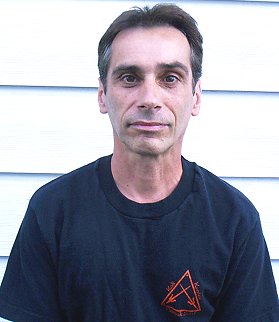 When a coworker of mine invited me to cross-train in Silat
When a coworker of mine invited me to cross-train in Silat
or, more accurately, a variety of martial arts including Silat as taught by my coworker’s instructor
I was happy to give it a try. It was sometime in the latter portion of 2004 when I first met, and began training with, Sifu Dan Donzella of Syracuse, NY. I’ve been visiting him regularly ever since.
Sifu Dan has been training in the martial arts for as long as I’ve been alive. Born and raised in Syracuse, New York, Dan began his training under Gary Galvin in Chuan Fa Kung Fu. When Sifu Galvin moved to Florida in 1977, Sifu Dan began teaching seriously. He has run commercial schools in the area from 1979 to 1981 and from 1985 to 1990. In 1993 he began teaching private lessons from his home in North Syracuse, from which he has been operating ever since.
“I always welcome new students,” he says, explaining that he teaches perhaps 20 or more pupils. They arrive at his home in a steady stream from perhaps 9:00 a.m. to as late as 8 p.m., for both individual and group lessons. “All are from word of mouth and current students,” Sifu Dan points out. “You get a better clientele that way.”
Dan is a multi-talented man whose blue-collar careers as a factory worker and truck driver are well complemented by his other skills and
pastimes. Semi-retired, he plays guitar in a local band and spends the rest of his time teaching an impressive variety of martial arts. Among these are Liu Seong, Kali, Silat, Pa Kua, Kuntao, and Chuan Fa, individually or in combination according to the preferences of his students. “I’m pretty flexible,” he admits.
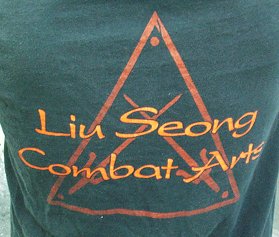 According to
According to
one Internet source,
Liu Seong Gung Fu is “based on a combination of Chinese and Indonesian martial arts as taught by Grandmaster Willem Reeders (Liu Seong). Liu Seong Gung Fu is a combination of Liu Seong Royal Chuan Fa, Kuntao, and Pentjak Silat. Chuan Fa is a Mandarin Chinese term meaning
‘Fist Method,’ and can refer to any number of Chinese martial arts. Kuntao is a Hokkien Chinese term meaning
‘Fist Way,’ and is generally used to describe Chinese martial arts in Indonesia, which have taken on some Indonesian attributes. Pentjak Silat refers to Indonesian martial arts…” According to Sifu Dan, Pentjak refers to the traditional dances of the Indonesian islands, while Silat refers to the fighting techniques hidden within those dances.
My own training with Sifu Dan has touched on multiple aspects of the styles he teaches, though I’ve only just begun. This has included counters and strikes, offensive and defensive knife work, takedowns and joint locks (standing grappling), and other material. Sifu Dan readily admits that some of his students come to him for strictly self-defense methods or straight techniques, rather than for a complete martial system, while others come seeking forms and the rest. “What happens eventually,” he says, “is that after about two years of teaching them combat
techniques, they go, ‘I want to learn the forms.’ They want the whole system.” Sifu Dan gladly provides this.
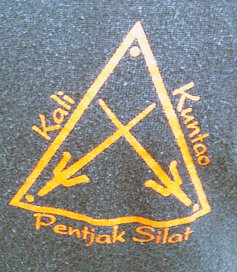 Dan has studied with several teachers since his time with Gary Galvin. These include Paul De Thouars, Dan Inosanto, and Gat Puno Abon Baet. He travels to Miami perhaps once a year to study with Baet, with whom he also exchanges training videotapes to obtain more feedback. “If you have an extensive background in martial arts,” Dan says of this type of long-distance training, “it will work. If you don’t, it’s very tough. If you make a lot of mistakes you have to correct those mistakes as you get with your teacher again, correcting what you practiced wrong.”
Dan has studied with several teachers since his time with Gary Galvin. These include Paul De Thouars, Dan Inosanto, and Gat Puno Abon Baet. He travels to Miami perhaps once a year to study with Baet, with whom he also exchanges training videotapes to obtain more feedback. “If you have an extensive background in martial arts,” Dan says of this type of long-distance training, “it will work. If you don’t, it’s very tough. If you make a lot of mistakes you have to correct those mistakes as you get with your teacher again, correcting what you practiced wrong.”
Dan also teaches two systems of Pa Kua. He learned the Dragon form from Frank Van Lenten, who taught Gary Galvin (who in turn passed it on to Dan in 1975 or 1976). Dan encountered Van Lenten in the mid 1990s and received what he calls a “refresher course” in the style. He sought permission to teach the style with Van Lenten’s blessing, who watched Sifu Dan perform it and said, “It looks better than mine. You can teach it.”
From a Chinese master based in Vancouver, Dan learned “Original Form” Pa Kua. “He didn’t speak any English,” Dan laughs, recalling the training. “So he just grabbed me and turned me and pushed me. When you don’t speak, you get a lot done.”
I asked Sifu Dan about the dizzying array of styles he teaches and how these come together
in practice, or conceptually. “The systems complement each other so well because the Indonesian, Chinese, and Filipino systems are all from pretty much
the same areas,” he told me. “They mix very well. All the Filipino systems have Silat in them… the systems are all from Southeast Asia, so they already have a tight blend. They’re all based on the triangle and the star pattern. Now, you couldn’t take a system from Korea or a hard Japanese style and try to mix it in with a Southeast Asian system because it just wouldn’t work. …The Southeast Asian systems complement each other
offensively and defensively because they’re all based on closing the
gap, angles, and similar footwork patterns.”
Dan speaks highly of the blend of styles he teaches as a realistic self-defense method. “It’s based more on a combat system that has been used before and not a system that has been developed in a commercial way, like
for commercial tournaments,” he admits. “If you go to a commercial school that teaches tournament fighting, it’s not meant for street fighting. The other systems, the Filipino systems, are only now starting to get slightly commercialized. They’re fighting it very hard. The systems were never meant that way.”
Dan explains that in teaching Liu Seong he is teaching both offensive and defensive methods. “In this system you learn how to use a knife first and then how to defend against it,” he says frankly. “First you learn how to use a weapon, and then you know how it’s being done against you and you know how to better defend against it.” He says he will teach the knife right from the start if the student has a good reference. Empty hand to weapon training
and vice versa works both ways and often depends on the student’s natural ability, in his opinion. He does stress the need to properly screen students before training them in offensive weapons use. “You’ve got to be careful of who you’re teaching,” he emphasizes.
Of Liu Seong and the method he imparts, Sifu Dan explains, “Angles and subtle body movements are used to stay within range but keep you out of range. The system is very fluid. It’s [an infighting system], a controlling system… it controls the opponent. If the opponent makes a move first, from that moment that he makes that first move, after that is all yours, all your moves. He should not have a chance to come out with something else. You shut off any weapon he plans on throwing before he throws it. Part of the Liu Seong system is totally offensive, too
first strike, total control from that point on to ending the confrontation.”
Sifu Dan is careful to teach his students the legal ramifications of their actions, teaching them the appropriate levels of defensive force and the appropriate scenarios in which to apply force. He speaks from experience, having had to defend himself a couple of times in real life. “It turned out very good for my side,” he says. “No legal problems at all.”
In one incident, he was forced to defend himself from an intruder at his school who was determined to challenge the students there. “I was the top student at the time, so I was the one who got the challenge. I hurt him enough so he would leave.” In another incident, in the early 1970s, Sifu Dan actually assisted police in subduing a knife-wielding man who was threatening to kill himself. A lot has changed in the intervening years; Dan readily admits that police officers would never involve a civilian in such a scenario now. “This was way back in the
’70s outside of Syracuse. It was a long time ago,” he says.
I asked Dan to perform a couple of simple demonstrations applying his methods to basic punches. Unfortunately for me, I got to be the attacker. In the first sequence, I punch at him and he teaches me why that’s a bad idea. The sequence would end with me sprawled on the asphalt covering his driveway (not pictured, thankfully):

Sifu Dan traps and intercepts
my incoming strike…
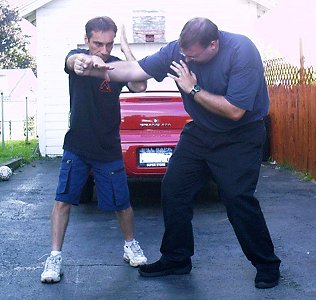
…stepping out and destroying
the trapped limb…
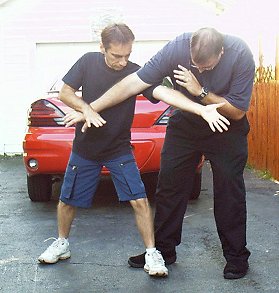
…then stepping in to set up
the takedown.
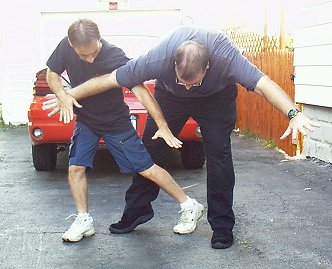
With a shift and the appropriate leverage,
he disrupts my balance.
In the next sequence, Sifu Dan moves inside my attack and whips an attack of
his own into my groin (again, this is not good for me):
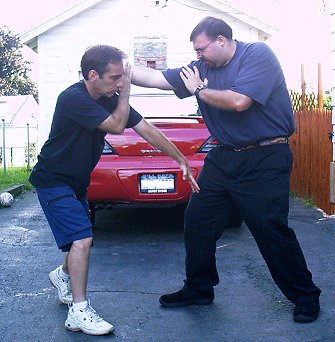
Sifu Dan moves inside my strike and
throws a whip with his other hand.
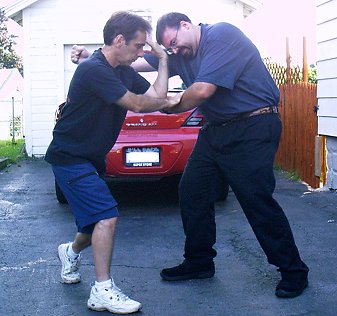
He moves forward, trapping and checking
my other arm so I can’t strike him with it…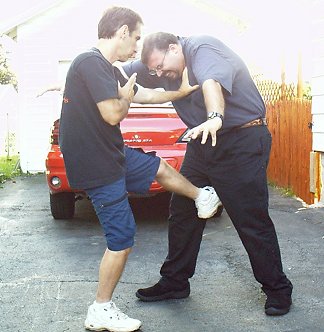
…And then plants a kick straight down the
middle while still checking my shoulder.
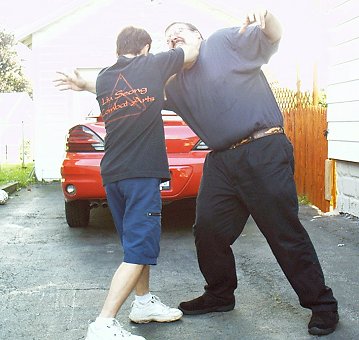
The follow-up strike twists my body and sets up
the takedown, destined to plant me on my head.
While learning this effective blend of armed and unarmed infighting systems, I’ve found training with Sifu Dan to be just what I want in martial arts instruction. He tailors the training specifically to my needs. I can work with him, with him and another student, or even with a group of his students if I wish. In this way, I’m receiving traditional arts in a non-traditional, informal setting, which is just
what I prefer. This non-commercial format seems to suit Sifu Dan, as well, who strikes me as a man very satisfied with how he spends his time.
We should all get to spend our days doing
what we love.
